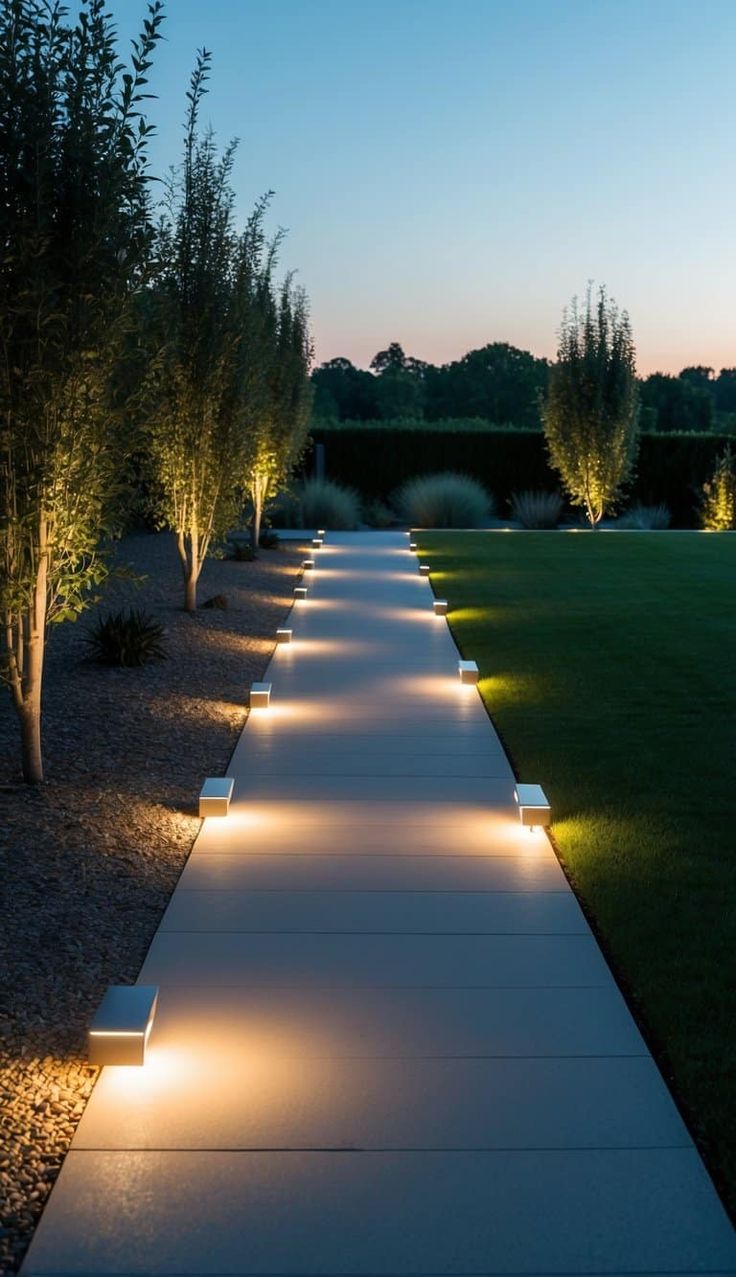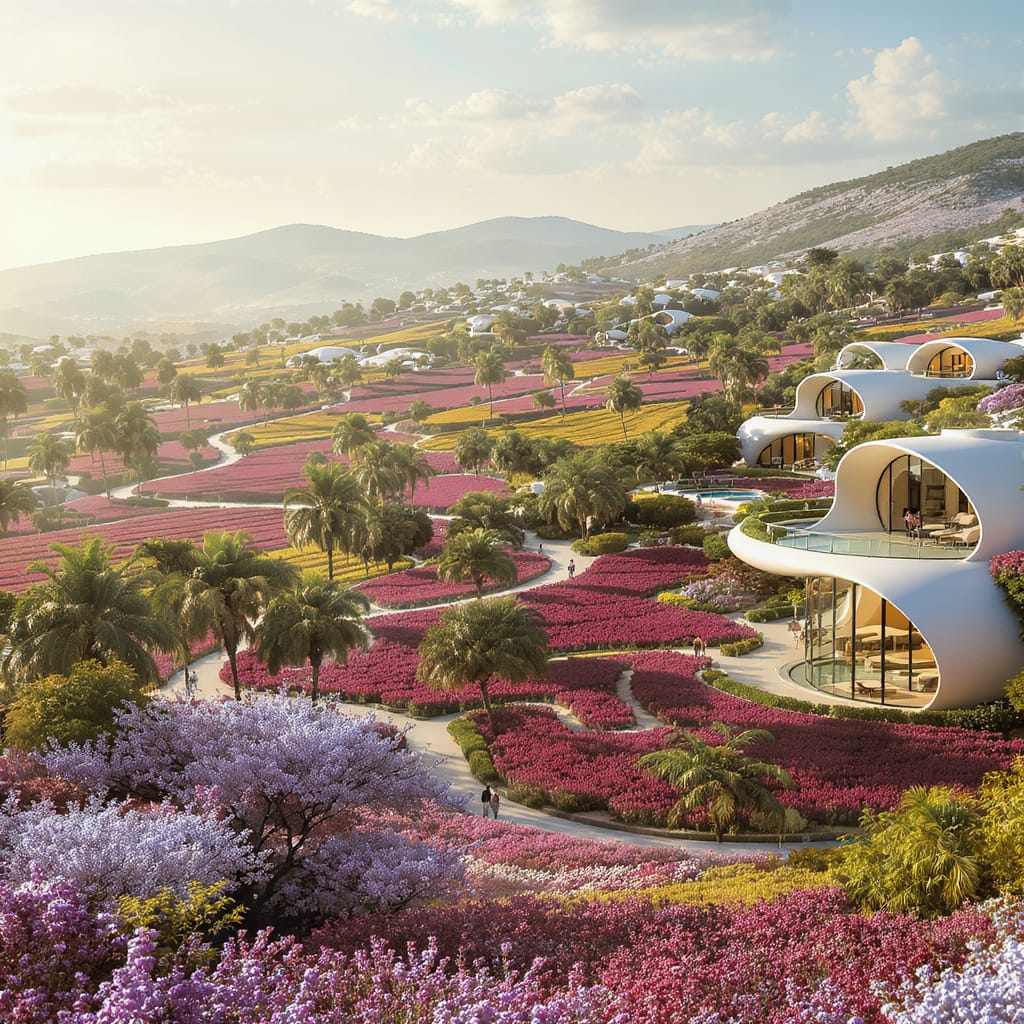
Concept Overview
The Flexible Lighting System is a hybrid illumination model designed to maximize visibility while minimizing energy use.
It combines motion-activated (sensor) lights with strategically placed reflective surfaces, creating a dynamic environment that lights up only when needed.
Instead of flooding pathways and spaces with constant lighting, Palm-Vine uses a responsive system that interacts with movement, producing light when and where it’s required.
Core Components
Sensor / Motion-Activated Lights
• Installed along pathways, driveways, entrances, and communal spaces.
•Activate automatically when motion is detected (pedestrian or vehicle).
•Remain off or in low-power standby mode otherwise.
•Configurable activation range (5–10 meters) and duration (15–60 seconds).
•Solar-powered or low-voltage LED units for maximum efficiency.
Reflective Panels & Surfaces
•Made from high-grade retroreflective materials (micro-prismatic or glass bead-based coatings).
•Embedded in road edges, walkway tiles, walls, fences, bollards, and even vegetation borders.
•When sensor lights activate, panels amplify and redirect the emitted light, illuminating surrounding space without extra fixtures.
•Panels can reflect both white and warm tones, creating a soft, natural nighttime glow.
Control & Monitoring System
• Smart controllers link groups of lights, optimizing activation patterns.
•Can adjust brightness levels based on time of night, human traffic, or ambient moonlight.
•Optional integration with the community’s renewable energy grid for data and energy analytics.
Energy & Cost Efficiency
This hybrid system ensures dual-level energy reduction:
1. Reduced Light Density – fewer sensor fixtures required.
2. Extended Light Coverage, reflective surfaces multiply the illumination from each active source.
Benefits:
•Up to 60–80% reduction in nighttime electricity consumption.
•Minimal maintenance (LEDs and reflectors have long service life).
•No continuous lighting required, drastically cuts carbon footprint.
•Enhances nighttime visibility while preserving natural darkness and star visibility.
Aesthetic & Environmental Advantages
• Preserves Night Ecology: Protects nocturnal wildlife and restores visibility of the night sky.
•Enhances Mood & Safety: Creates calm, soft, human-centric lighting rather than harsh glare.
•Architectural Harmony: Reflective elements can be designed artistically, embedded in tiles, sculptures, or landscape features.
•Promotes Awareness: Encourages residents to live with light, not under it.
Smart & Expandable Features
• Optional App Integration for smart control and data analytics.
•Adaptive Learning System that adjusts light intensity based on usage patterns.
•Solar + Battery Backup ensures uninterrupted operation even off-grid.
•Compatible with infrared and daylight sensors for seamless day-night transitions.
Materials & Sustainability
• Reflective panels made from recycled aluminum or polymer composites.
•LED lights rated at <10W per unit, ensuring ultra-low energy draw.
•Motion sensors with PIR (Passive Infrared) technology for reliability.
•All components designed for easy maintenance and modular replacement.

Summary: Benefits at a Glance
- Energy-efficient, lights only when necessary.
- Cost-effective, fewer fixtures, lower bills.
- Safe consistent visibility through reflected light.
- Scalable, adaptable to any community or pathway layout.
- Eco-conscious, preserves the natural nightscape.
- Aesthetic, integrates seamlessly with Palm-Vine’s design identity.
We believe the night should not be conquered, it should be respected.
Our lighting system is not about brightness, but awareness.
Light flows where life moves, and rests where life is still.”
